Owning the Lange Datograph: Everything They Don’t Tell You About the Perfect Chronograph
Six months with the Datograph — the highs, the heartbreaks, and why it still has no equal.
When I first picked up the Lange Datograph — the original platinum 403.035 — I honestly thought I knew what I was getting into. Every collector I trusted had described it as the chronograph, the benchmark against which all others should be judged. It had the looks, the movement finishing, the weighty presence... everything on paper made it sound perfect.
But after six months on the wrist, I found out there’s a lot they don't tell you about living with a Datograph. Some of it surprised me, some of it frustrated me — and some of it made me fall even deeper in love with the brand that created it.
This is the honest story of how I came to own the Datograph and what it’s really like to own. No filters, no hype — just one collector, one chronograph, and six months of reality.
The Honeymoon Phase
I first stumbled across A. Lange & Söhne thanks to my younger brother.
We were both deep in the early stages of watch obsession — I was firmly down the Rolex and Omega rabbit hole, while he had somehow wandered off into the world of Lange and Grand Seiko. I still remember it clearly: we were at the Fine Watches Room in Harrods back in 2016, and I was halfway through trying on yet another Submariner when he dragged me over to a brand I’d never even heard of.
Lange.
The second I saw them, I got it.
The finishing was on a completely different level — sharp, warm, detailed in a way I didn’t even know watches could be. And the way they felt in the hand... it was completely different to Rolex- it somehow felt less flashy, yet more expensive in a way I hadn't experienced before.
The sales assistant pulled out three watches that day, but honestly, I only remember one: the Datograph.
Fast forward to 2024, and I finally made it happen — I bought the watch that had captured my attention all those years ago.
After a multi-watch trade deal with the team at Subdial (who were fantastic to work with, by the way), I ended up with a 2006 Datograph, complete with the platinum deployant buckle, for around £48,000.
The first thing that hit me when I picked it up?
The weight.
It honestly felt like someone had just handed me a solid bar of platinum.
Before I get too carried away, let’s get some quick numbers out of the way — I always find this kind of thing super helpful when I’m reading reviews, so hopefully it helps you too.
My wrist measures about 6.5 inches. It’s pretty flat across, but even so, there’s not a lot of real estate to work with.
The first-generation Datograph (ref. 403.035) comes in at 39mm across, 12.8mm thick, and a lug-to-lug of 48.2mm, at least according to my trusty calipers. I also put it on the kitchen scales- 185 grams on the platinum deployant. Heavy Hitter.
Let me quickly compare it to a Patek or a Rolex — not in terms of specs or prestige, but feel. The only way I can describe the Datograph in the hand is dense. Not just heavy — dense. It feels like it was carved from a solid block of something far more serious than steel or gold.
I don’t think it’s just the platinum case, either. There’s a weight to the movement — that signature German silver probably plays a role — and the way Lange constructs their cases just gives the watch this solid, immovable presence.
The weird thing is, the Datograph isn’t massive on paper: 39mm diameter, under 13mm thick. But it wears larger — not in an awkward way, but in a way that says, “I’m here, and I’m not like the others.”
With Rolex or even Patek, the watch eventually fades into the background. You forget it’s there. It becomes part of you — like a second skin. That never happened with the Datograph. You always know it’s there. And honestly? I kind of loved that, at the beginning at least.
Movement Porn- L951.1 Under the Loupe
You can’t talk about the Datograph without talking about the movement. You just can’t.
Even Philippe Dufour — yes, that Dufour — called it the perfect chronograph movement. He was so impressed, he actually bought one for himself. (There’s a great moment in his interview with Tim Mosso where he talks about it — jump to 21:40 if you’ve got two minutes and want to hear a real master talk about it. Also a hilarious moment where he described being too poor to buy the platinum reference, and the Dufourgraph is born- 403.031).
What sets the L951.1 apart is its three-dimensional architecture. It’s not just technically impressive — it’s visually overwhelming in the best possible way. Layers upon layers of levers, cams, and springs, all hand-finished to a level that makes even high-end Swiss brands flinch. For the first few days, I barely wore it. I just kept taking it off to look at the movement through a loupe and try to catch all the little details I’d missed the first twenty times. I have spent some significant time with the Patek 5170 (I think the fairest comparison as it was Patek’s in house attempt at a Chrono) and although of course it is beautiful, I don’t think anyone would disagree that the L951.1 is superior visually and probably functionally.
But it’s not just pretty. The movement feels incredible in action. Engaging the chronograph is crisp and immediate — there’s no hesitation, no stutter like you sometimes get on lesser chronos (yes, I’m looking at you, Speedmaster).
And then there’s the minute jumper — watching it flick instantly as the chronograph hand passes 12 is addictive. Oh, and let’s not forget: it’s a flyback. Resetting while running is a proper flex, and the Datograph does it every time without breaking a sweat.
Now I don’t want this just to be a fanboy’s love letter to the Datograph. There is one huge issue with this movement. The thickness. Patek managed to get their 5170p at about 11mm thick- that’s nearly 2mm thinner than the Dato, which might not sound like much, but makes a huge difference to wearability.
Living With the Datograph: The Frustrating Bits
Once the honeymoon period wore off, I started to notice a few things that honestly frustrated me about the Datograph.
First off, this is not a grab-and-go watch. It demands thought — how you wear it, what you wear it with — in a way that something like a Lange 1 or even a Patek Calatrava just doesn’t. The Datograph makes a statement, especially on a smaller wrist. It’s not aggressive, but it’s definitely assertive.
The weight is substantial — and not always in a good way. There were days I took it off in the evening and actually felt a bit of wrist fatigue. Not ideal, and definitely something to keep in mind if you’ve got smaller wrists like mine.
Then there's the power reserve. The ref. 403.035 is rated at 36 hours, which was perfectly respectable back in 1999 — especially for a fully in-house chronograph movement. But by today’s standards? It’s a bit underwhelming. More than once I forgot to wind it in the morning, only to find it had stopped by lunchtime. There’s no power reserve indicator either — unlike the updated Datograph Up/Down, which also bumps reserve up to 60 hours.
And then... the straps.
I’m someone who likes to put dressier watches on more casual straps — suede, nubuck, things that tone them down a bit. The Datograph just doesn’t cooperate. The head is so heavy that unless it’s on a proper, stiff alligator strap, the watch shifts around like mad. I was adjusting it constantly throughout the day, and it drove me slightly nuts.
Part of the issue is the deployant. Lange don’t offer short straps for deployant buckles, and with my child-sized wrists, the standard strap didn’t sit right at all. I had to go custom — 45–50mm on the short end, 115mm on the long — just to get the clasp to sit centrally under my wrist where it should.
Maybe it’s just a small-wristed person problem… but still, worth knowing before you dive in.
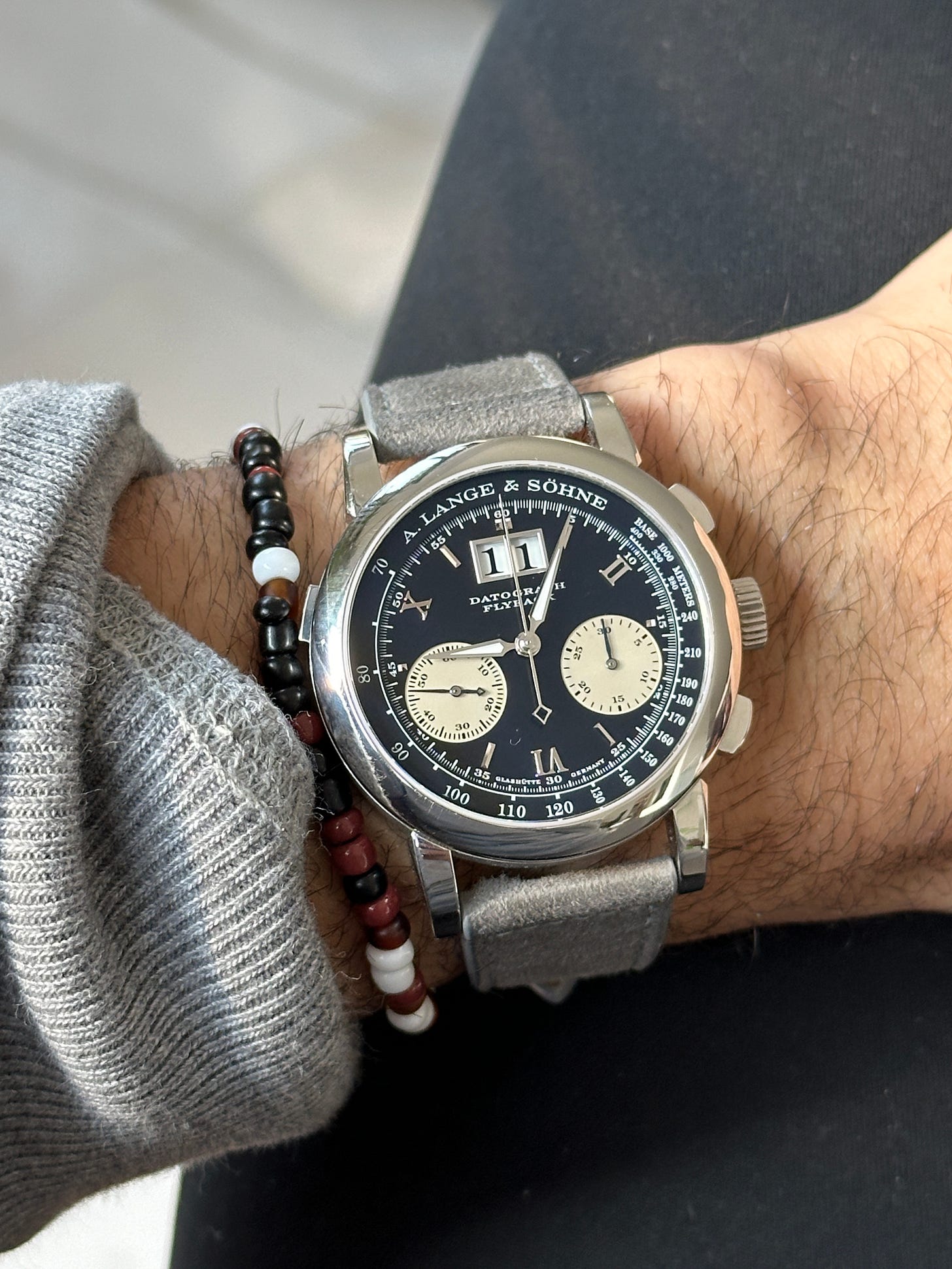
Case Shape: The Pot-Bellied Dato
This deserves its own section, because it’s something that doesn’t come across in photos — but matters on the wrist.
In an effort to make the Datograph appear thinner than it actually is, Lange did something clever with the case design. The case side is multi-stepped, tapering away from the movement at the mid-case before flaring out again at the caseback. It’s a smart visual trick that reduces the perceived thickness when viewed from the side — and it works.
But it does create a quirk: a kind of “pot-bellied” shape that sits proud on the wrist. You don’t really notice it while looking at the watch straight-on, but you do feel it — especially if you have a smaller wrist.
I tend to wear my watches fairly snug anyway, so the wobble wasn’t unbearable. But even strapped tight, the Datograph’s lugs never fully hugged my wrist the way I wanted them to. That caseback bulge means it always sits a little high — like it’s hovering just slightly above where it should rest. Not a dealbreaker by any means… but it’s one of those small details that makes a big difference in daily wear.
Servicing: A Reality Check
If you haven’t read my State of Lange in 2025 piece, I’d recommend checking it out — it goes into detail on the servicing issues Lange owners have been dealing with recently.
The Datograph falls under Lange’s Class 4 service tier, which means a full service of the movement and case starts at around £3,000, according to their own price sheet. And that’s just the baseline — costs can climb steeply if Lange finds evidence of third-party intervention.
Now, I haven’t had to service this particular watch yet, so I can’t speak from personal experience. But this is the reality of owning a complex, high-end piece like the Datograph. It’s part of the deal — and something you absolutely need to factor in when considering ownership.
Six Months Later: Would I Buy It Again?
So, would I buy the Datograph again?
I’m not sure. I keep oscillating between yes and no.
Over the past six months, this watch has gone from grail to daily reality. I’ve felt the weight of it (literally), fiddled with straps, watched it sit awkwardly on my wrist some days, and sighed when it stopped ticking just before lunch because I forgot to wind it.
But I’ve also caught myself staring at the movement under a loupe for far too long. I’ve had people who don’t care about watches ask, “Wait, what is that?” I’ve worn it to big dinners, on holiday and quiet weekends, and every single time I’ve fastened the clasp, I’ve felt lucky.
It’s not perfect — and I like it more because of that.
The Datograph demands something from you. You don’t just wear it — you engage with it. You wind it. You learn how to wear it. You live with its quirks. And if that’s the kind of relationship you want with a watch, then yes — you should buy it.
Just make sure you leave some budget for custom straps!
Alternatives to consider:
1 . Vacheron Constantin Cornes De Vaches
Patek Philippe 5170
A. Lange & Sohne 1815 Chronograph
Conclusion: The Flawed Masterpiece
The Datograph isn’t a casual fling. It’s not the watch you throw on to run errands or head to the gym. It’s a watch that asks something of you — and if you’re the kind of collector who appreciates that, then it gives back tenfold.
Is it perfect? No.
Is it easy to wear every day? Definitely not.
But it’s still the chronograph people measure everything else against — and honestly, it might always be.
It’s a reminder that great watches aren’t always convenient, or comfortable, or even logical. But sometimes, they can feel right.
Perhaps the Datograph won’t last much longer in my collection, as wearability is becoming much more important to me. But it has been a pleasure to be a custodian for the time being.
Thanks for reading — if you own a Datograph or have one on your radar, I’d love to hear your take. What’s your experience been like, and would you buy it again? Let’s chat in the comments.



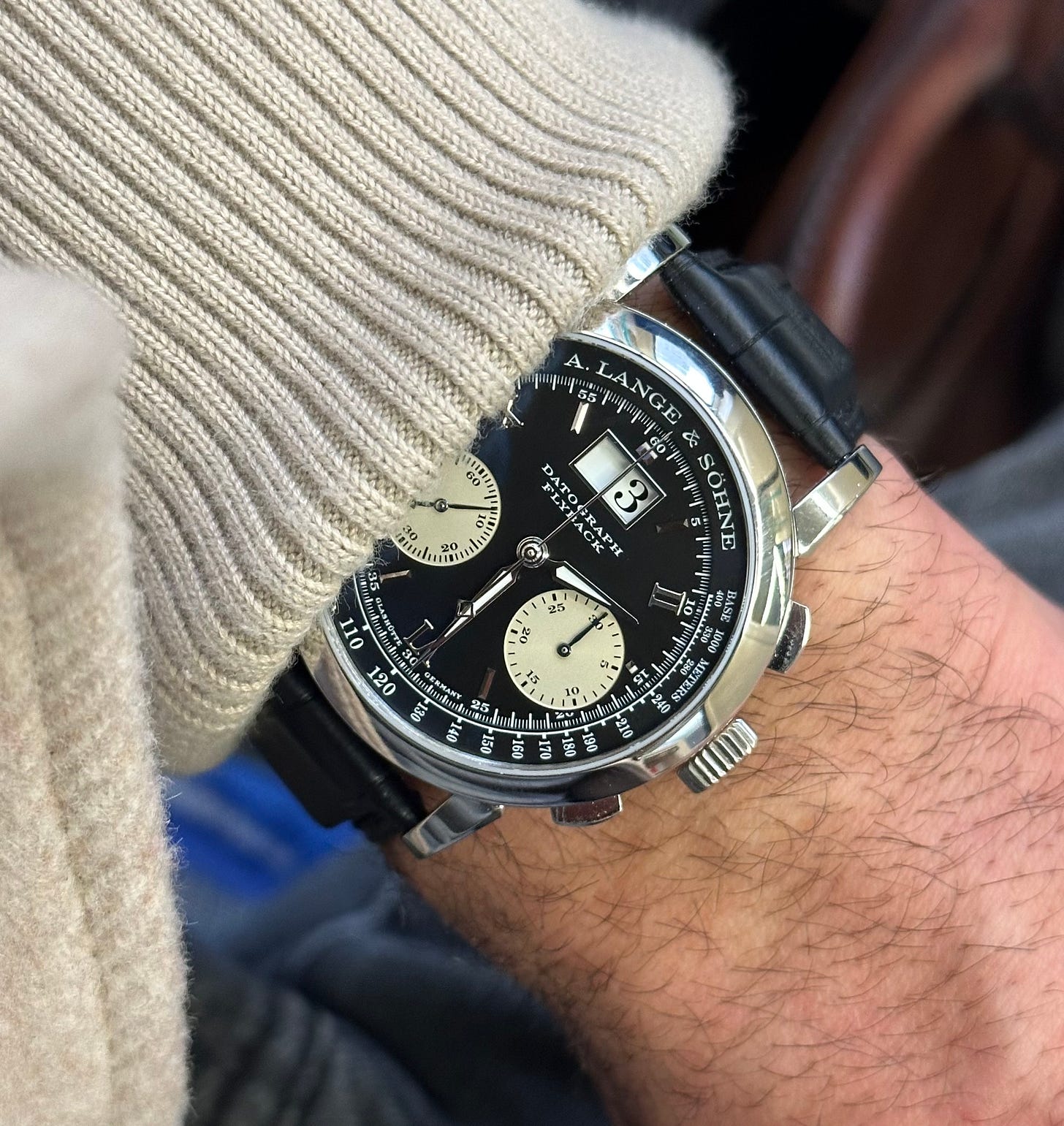
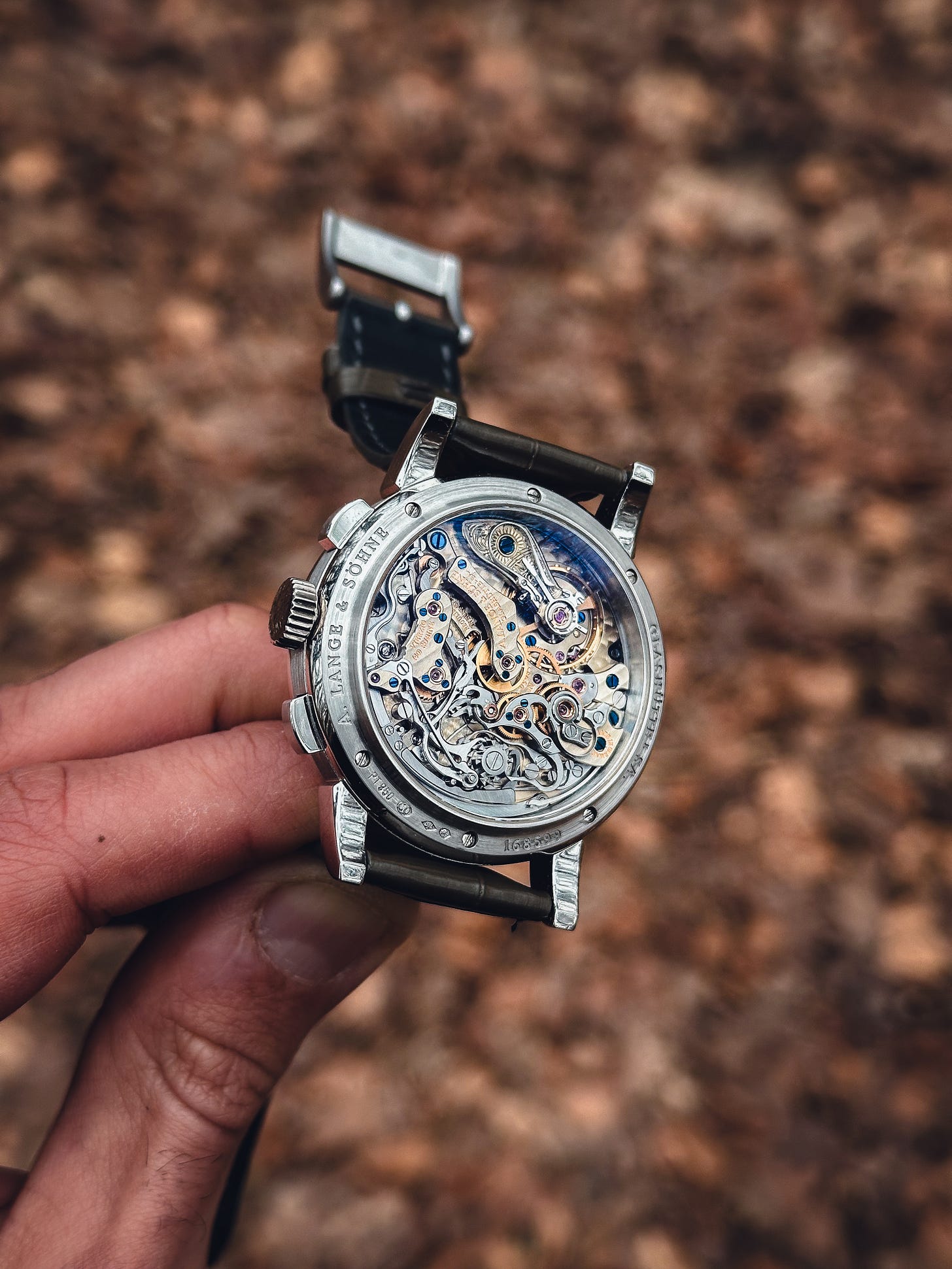


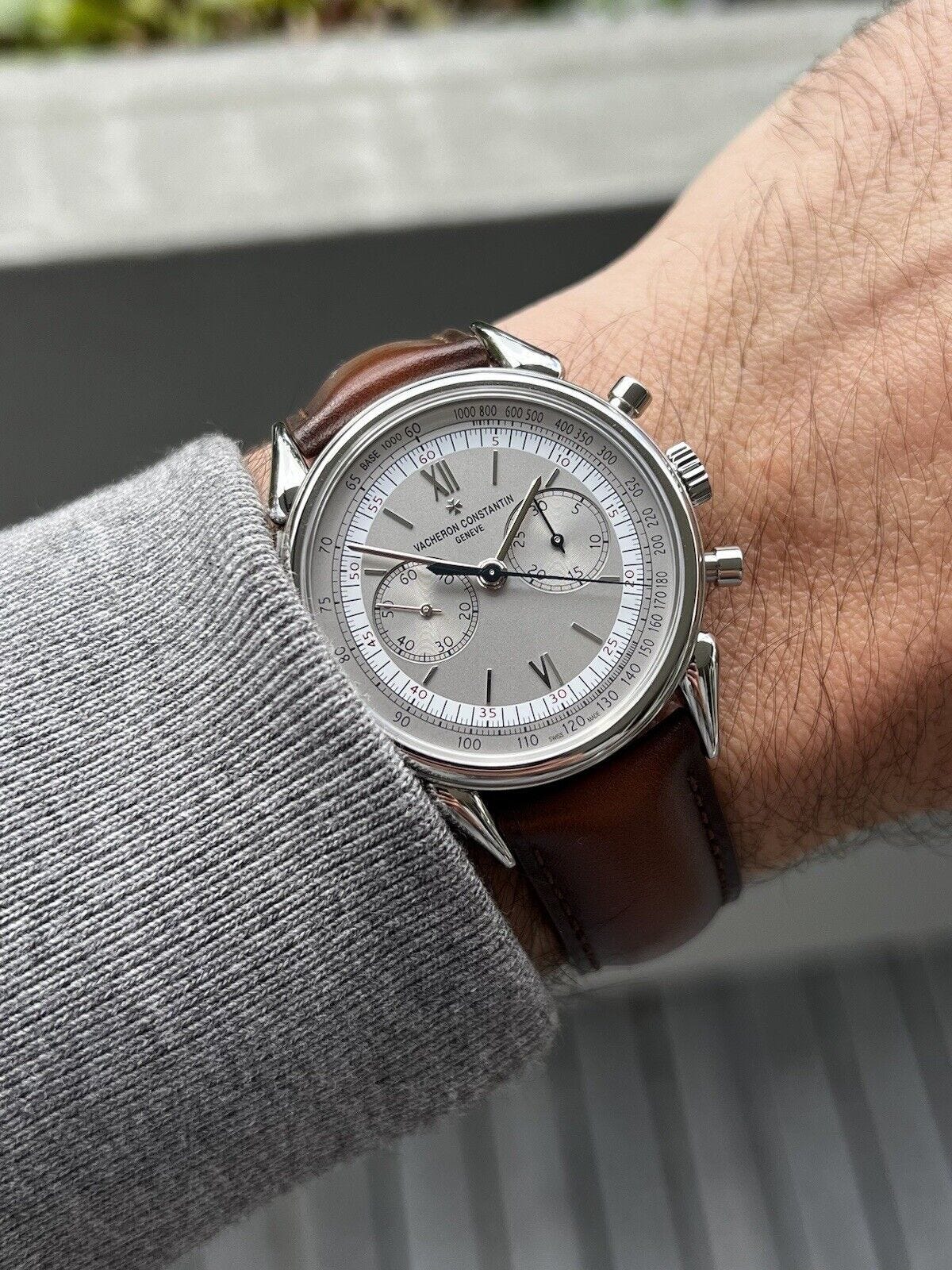
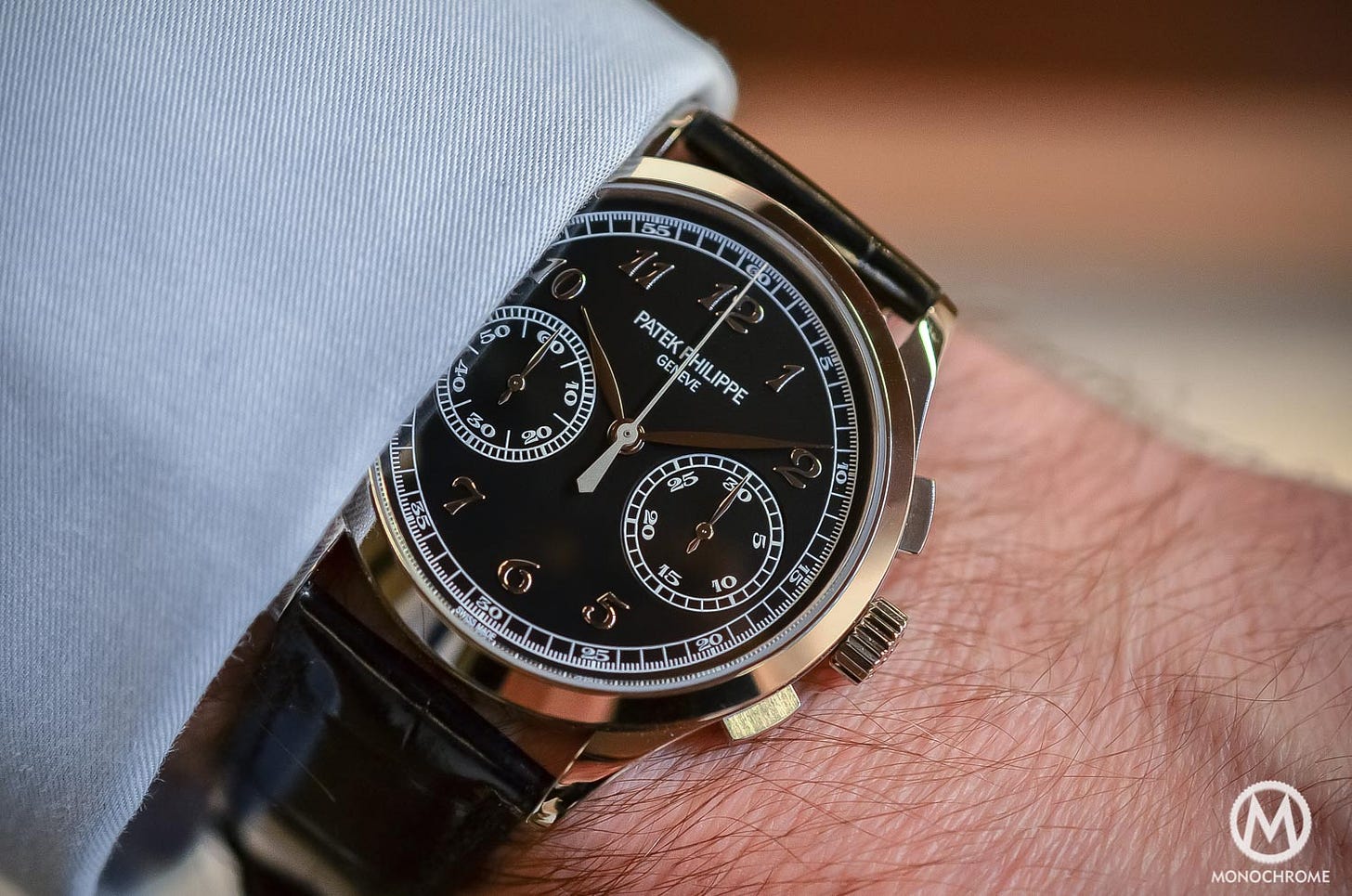
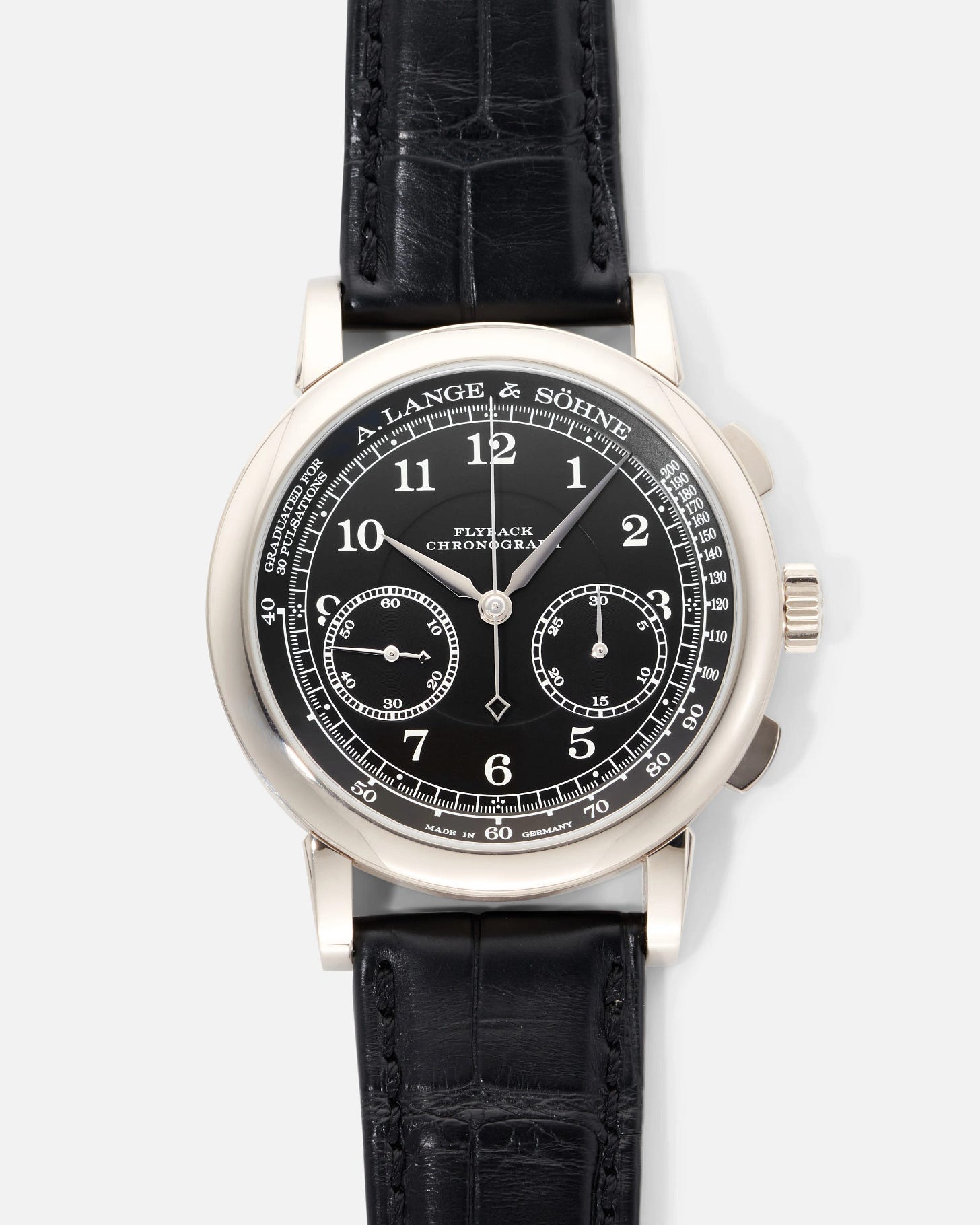
really appreciate the insight from an owner. i went for the first-gen 1815 chrono instead (401.026), but the 403.035 is still one of my grails. the slimmer profile and better wearability of the 1815 were considerations for sure, but my main reasoning was the more approachable price.
the dato is the king of chronos, the 1815 is the chill piece you can wear under the cuff to the office and no one will have a clue you have something that special on your wrist.
Thanks for the thoughtful review! As someone with a similar 6.5" wrist and also considering a Datograph in the future, this serves as a really helpful data point for my journey and decision.